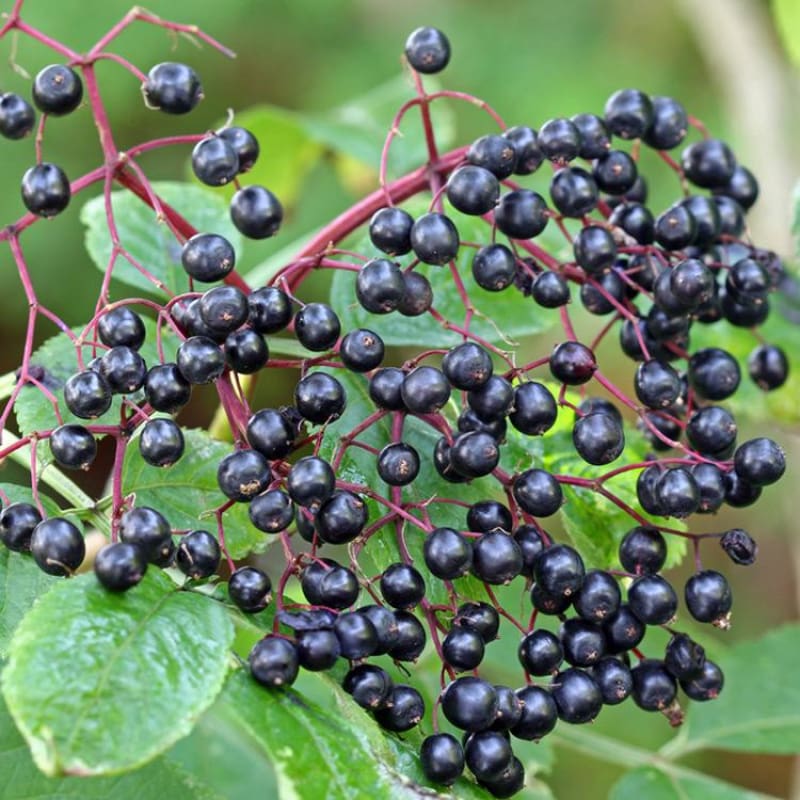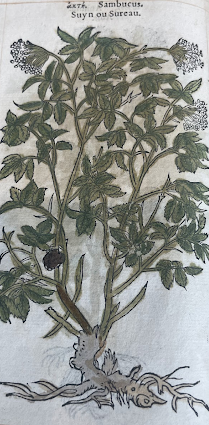Scientific Name: Sambucus tree belonging to the Adoxaceae family, the most common type is Sambucus nigra
Origin: Europe
Description: Elderberry trees are small trees or shrubs with long, serrated, compound leaves. The tree produces clusters of very small flowers, commonly known as elderflowers, which in turn produces tiny clusters of elderberries. The flowers are typically off-white in color and the fruit ranges between black, dark blue or dark purple (Gaur, et. al, 2024).
Historical Medicinal Use: The elderberry was used in a range of remedies, for example, it was believed to have had antiviral and immune-boosting properties, to flush out phlegm and the anger (Fuchs, 1549).
Modern Medicinal Use: Elderberry is best known for being high in vitamin C, antioxidants and in fiber. It promotes heart health, boosts the immune system, lowers inflammation and stress and is good for respiratory and lung health (Mandl, 2023).
Gaur, Aakanksha, et al. “Elderberry.” Encyclopædia Britannica, Encyclopædia Britannica, inc., 28 Feb. 2024, www.britannica.com/plant/elder-plant.
Mandl, Elise. “The Pros and Cons of Elderberry.” Healthline, Healthline Media, 2 Feb. 2023, www.healthline.com/nutrition/elderberry#what-is-it.
De Fouquet, Marie. Recueil des remèdes faciles et domestiques, choisis et expérimentés, et très approuvés pour toutes sortes de maladies internes et externes, et difficiles à guerir. 1685.
Fuchs, Leonhart. Histoire des plantes. 1549.

